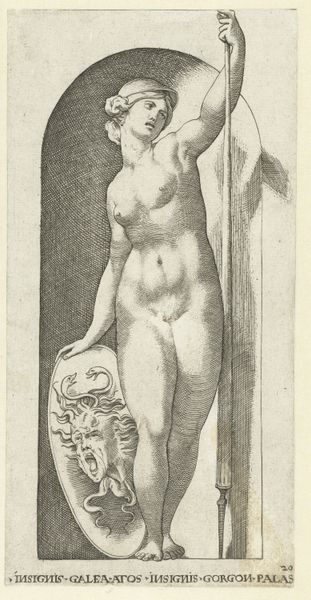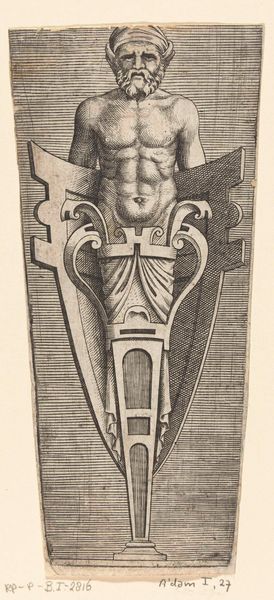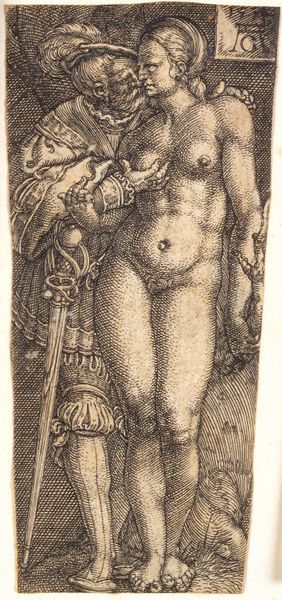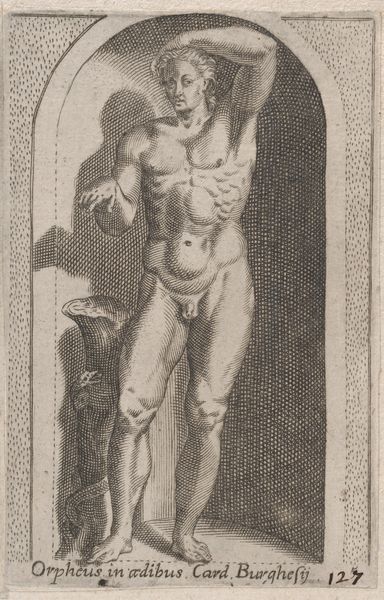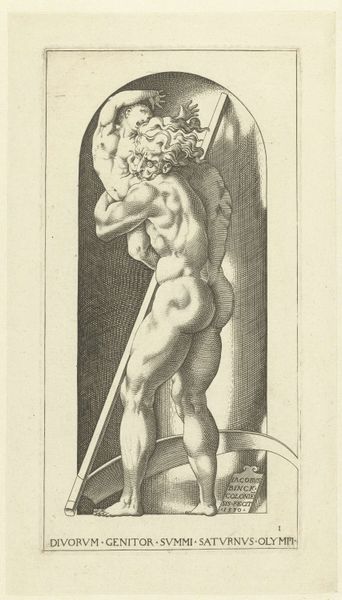
Sculptuur, kariatide die op haar hoofd een brandende urn draagt c. 1535 - 1540
0:00
0:00
print, sculpture, engraving
# print
#
old engraving style
#
mannerism
#
figuration
#
sculpture
#
history-painting
#
nude
#
engraving
Dimensions: height 166 mm, width 41 mm
Copyright: Rijks Museum: Open Domain
Curator: This is a print called “Sculptuur, kariatide die op haar hoofd een brandende urn draagt,” or Sculpture, Caryatid Carrying a Burning Urn on Her Head. It's estimated to be from around 1535 to 1540. Editor: My initial thought is—intense! There’s a stark contrast between the nude, almost androgynous figure and that weighty urn, aflame no less. Curator: Indeed. Caryatids in architecture usually served to support entablatures. But this, as an autonomous image, presents a potent symbolism regarding the socio-cultural burdens and roles imposed particularly on women during the Renaissance. The fiery urn perhaps symbolizes the passions and burdens they bore. Editor: The composition definitely accentuates that sense of weight and pressure. See how the artist uses strong, vertical lines, emphasizing the figure’s elongated torso and muscular arms straining upward? It's like a study in contrapposto, but with intense tension, not repose. Curator: The Mannerist style favored this kind of dramatic representation and distortion. Consider how this contrasts with the classical ideals of beauty which emphasized perfect balance and harmony. Instead, here we witness a departure from these standards, embodying the disquietude of the era. Editor: Absolutely. And that engraved line work, creating stark highlights and shadows… It emphasizes the almost pained expression on the figure's face. Notice the subtle hatching which really amplifies the textural contrast between the figure's skin and the cool surface of the urn. Curator: We can consider, also, that these images often functioned within larger iconographic programs related to death, sacrifice, or commemoration, often appearing in emblem books. Who might have owned this image, how did they interpret it? Was it an item of devotion, inspiration, or commentary? Editor: Seeing this makes me want to delve more into the use of allegory and the symbolism they encoded within these designs! Curator: Precisely. It also compels me to reconsider art history through the lives of its patrons, printers, and, of course, the societal constructs. It’s a rich conversation that spans generations, cultures, and aesthetic values.
Comments
No comments
Be the first to comment and join the conversation on the ultimate creative platform.
